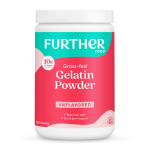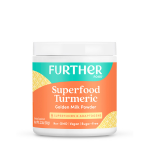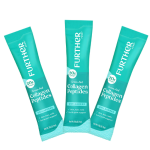Between my daughter’s birth and her ninth birthday, I had to learn how to feed her well on an utterly frustrating array of medically-required restrictive diets. When she was a baby and toddler, she had to follow a low-acid restricted diet that eliminated citrus fruits, tomatoes and chocolate because of GERD (gastro-esophageal reflux disease). Between age four and six, she was diagnosed with an inflammatory disorder called eosinophilic esophagitis and followed a six-food elimination diet that began by eliminating dairy, eggs, soy, wheat and all nuts. After major cardiac surgery at age eight, my child had to avoid absolutely all fat for six weeks. (Read the story about my daughter’s diagnoses for a complete understanding of our family’s journey.)
Through all of that, our family remained vegetarians. Because she was not tube fed or supplemented with any kind of special formula, it was up to me to be sure that she got appropriate nutrition even as we stared through large gaps in the standard US food pyramid.
So, how did I do it? I relied on some staple items that were both tasty and adhered to the restriction du jour. I considered it a bonus if these items could be made attractive to my other child who was not on any kind of restricted diet. If you’re working with food restrictions for your child, hopefully you’ll find a few things on this list that work for your family, too!
1. Lentils and Beans
The absolute staple foods of our diet for years, the variety of ways to use lentils and beans still astounds me. We ate them in soups, salads, stews, soft purees, and spreads; wrapped in tortillas, ladled into thermoses, smeared across tostados and toast and chips; at breakfast, lunch, and dinner. Their mild flavors provide a great base for lots of spices and complement vegetables beautifully.
All lentils and beans are acceptable on a low-acid diet and on the six-food-elimination diet. On a fat-free diet, only lentils and black beans worked for us, since other beans contain trace amounts of fat.
2. Bananas
Nature’s most magical and versatile fruit, bananas come in their own wrapping for easy transport, are affordable, and work well under varying levels of ripeness. We ate bananas at every stage of every diet — they are free from acid, common allergens, and fat. Use them for:
- Ice Cream: Frozen and thrown into a food processor or blender, they become a perfect creamy base for any frozen dessert.
-
Egg Replacer: Add one mashed banana in place of every egg in a baked recipe. The gooeyness of the banana holds your baked goods together just as an egg would, and they add a subtle additional sweetness, so you can even reduce the sugar in your recipe a little, if you like.
-
Smoothies: There is never a smoothie made in our house without a base of bananas. They add a creaminess that takes the place of additional milk, and keeping your bananas frozen means you don’t have to add ice, either.
3. Extra Virgin Coconut Oil
On the six-food-elimination diet, it was hard for us to find great sources of fat for my daughter. Even before that, she was always a somewhat underweight child, and so when we discovered the nearly imperceptible taste of extra virgin
coconut oil, it was a no-brainer that we started adding it to lots of her food. It comes in glass jars and stays roughly the consistency of soft butter at room temperature, but a spoonful plopped into a bowl of hot soup melts instantly. It can also be used to sauté vegetables or to grease the pan when baking.
Extra virgin coconut oil contains 125 calories per tablespoon, which is a great calorie boost for children like my daughter who had such a hard time getting enough calories each day. Studies show that it offers additional health benefits for our immune and digestive systems. For obvious reasons, this was not something we could give our daughter when she was on the fat-free diet, but once that diet was done, we used it to help her regain lost weight.
4. Rice, Hemp and Oat Milks
Because of her sensitivities to foods we introduced when she was a baby, we’d always given our daughter soy milk instead of cow’s milk. However, when she had to eliminate soy milk from her diet on the six-food-elimination diet, we tried every other non-dairy milk on the market. Everyone’s flavor preferences vary, of course, but rice, soy and oat milks were the ones that worked best for us.
We used
rice milk mostly for making sauces and for adding liquid to smoothies. Its flavor was far too bland and its consistency too watery for us to drink or put in cereal, but it worked well other places.
Hemp milk was t
he best thing we found to use in baking — it was creamy and thick, but when we drank it straight, we noticed a metallic aftertaste that we all found unpleasant.
Oat milk w
as, hands down, the best non-dairy, non-soy milk we found for drinking and pouring into cereal. The flavor is, not surprisingly, like oatmeal, which is one we all found familiar and very palatable.
It is important to read the labels on these non-dairy milks very carefully — we did find that there were non-dairy milks that were prepared on shared equipment with everything from dairy products to nuts to soy, and that was something our daughter’s doctors wanted us to avoid. Also notable is that virtually none of these non-dairy milks were available in a fat-free version.
5. Avocados
Like coconut oil, avocados are an excellent source of healthy fat for growing kids, and they are wonderfully versatile. On the six-food-elimination diet, we used them as a great way to pack nutrient-dense calories into our daughter’s diet. She has always been happy to eat them simply chopped with salt, but we also used them to make a simple guacamole (mashed avocado and salt), and once she was allowed to eat acidic foods, we added lemon juice and tomatoes.
Avocados make a great, easy sandwich with mayonnaise and bread, and are the perfect topping for tostados or salads, but did you know that you can puree them, add melted chocolate, and have a delicious pudding? It’s true!
This delicious fruit is, sadly, not safe for a fat-free diet, and our daughter happily applauded their re-entry into her diet once that phase of restriction was done.
6. Popcorn (and a popcorn alternative!)
This is the world’s most perfect kid snack! I’m not talking about the chemical-laden, greasy microwavable bag variety, but the simple dried corn kernels you can pop yourself in a pan on the stove. They’re cheap, they’re easy to make, and the versatility of their mild flavor lends itself to a huge number of variations. Here are some of the things we did with popcorn during the acid-free and six-food elimination diets:
- Pan-popped in oil and sea salt — the classic
- Dusted with nutritional yeast and garlic salt for a cheesy flavor
- Drizzled with homemade caramel sauce (vegan soy-free margarine, brown sugar, vanilla and salt)
- Mixed with gluten-free pretzels and crumbled rice crackers like a party mix
You’d think that air-popped popcorn would also be a great snack for the fat-free diet, but sadly, even air-popped popcorn with no oil has half a gram of fat per serving. As an alternative when that diet was required, we crumbled fat-free rice cakes into a bowl and sprayed them with a fat-free butter spray. It wasn’t the healthiest snack we had, but for an occasional treat during that time, it hit the spot.
7. Hearts of Palm
Sometimes, foods for a child with a restricted diet are most valuable for their “fun factor.” When I had to say no to a constant repetition of the same question — “Is that safe for me?” — it was a joy to find this one odd little food that brought my daughter so much pleasure. Hearts of palm are brined vegetables that look like what they are — the core, or heart, of a palm tree. Layered and peelable, they visually resemble string cheese. On both the six-food-elimination diet and the fat-free diet, we spent a small fortune each week on these somewhat exotic treats. Our daughters would sit at the table and peel them slowly, licking the brine from their fingers. They’re fun, they’re tasty, and they contain a small amount of vitamin C.
8. All the Vegetables and All the Fruits
With the exception of tomatoes and citrus fruit on the acid-free diet, and avocados on the fat-free diet, all vegetables and fruit were available to us during all phases of our daughter’s restricted diets. The best thing we did during this time was become members of a local CSA (community supported agriculture) that delivered an overflowing box of organic vegetables to us for the 20 week growing season of the farm. Between that and our regular trips to the farmer’s markets and produce stores in our area, we became experts at trying new fruits and vegetables.
Along the way, we fell in love with a wide variety of leafy greens, root vegetables, berries, and melons. We learned to cook things we had never heard of, and in the process, the restrictions started to include an invitation to think outside our previous smaller circle of produce preferences. We are more well-rounded eaters today as a result!
It can feel so daunting and so overwhelming to be told you must remove foods from your diet, especially when you’re imposing those restrictions on a child. By approaching it as a family journey and focusing on the foods we could eat, the process became much more manageable. Though she is now eating an utterly unrestricted diet, my daughter still happily eats all the foods listed above — not because she has to, but because they are delicious!
Want more? You might also like:
How My Daughter’s Diagnosis Forced Me to Transform the Way I Cooked for Good
9 Ridiculously Yummy Heart-Healthy Dishes You Need to Try
Healthy Comfort Foods? Yes! 9 Recipes Top Bloggers Are Cooking Right Now
Gone Gluten-Free? A Dietitian Reveals 9 Essential Nutrients You May Be Missing
Can a Raw Food Diet Help You Heal? 8 Tips for Making the Transition
Note: PLEASE consult with your doctor before making any changes to your diet or medications. The material on this site is provided for educational purposes only, and is not to be used for medical advice, diagnosis or treatment.

























